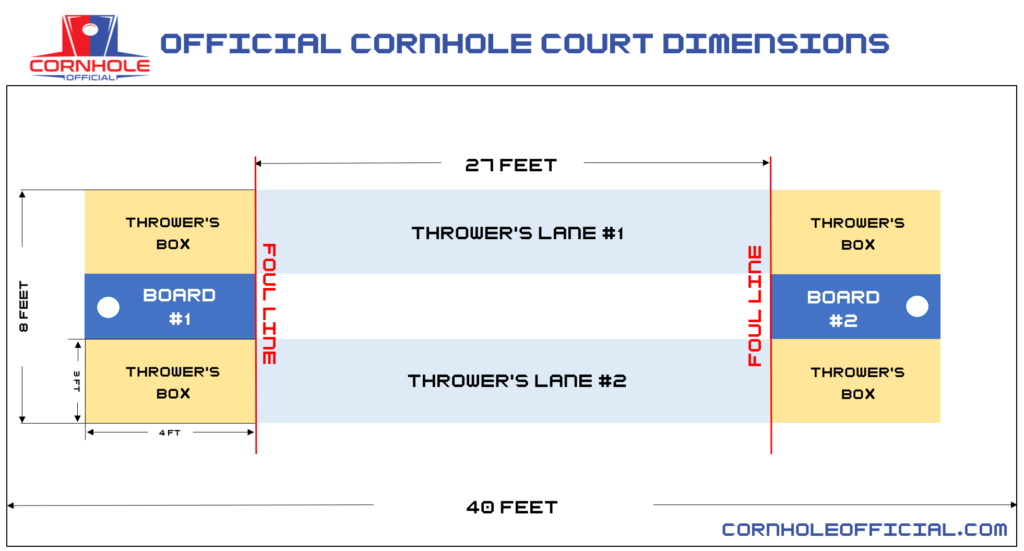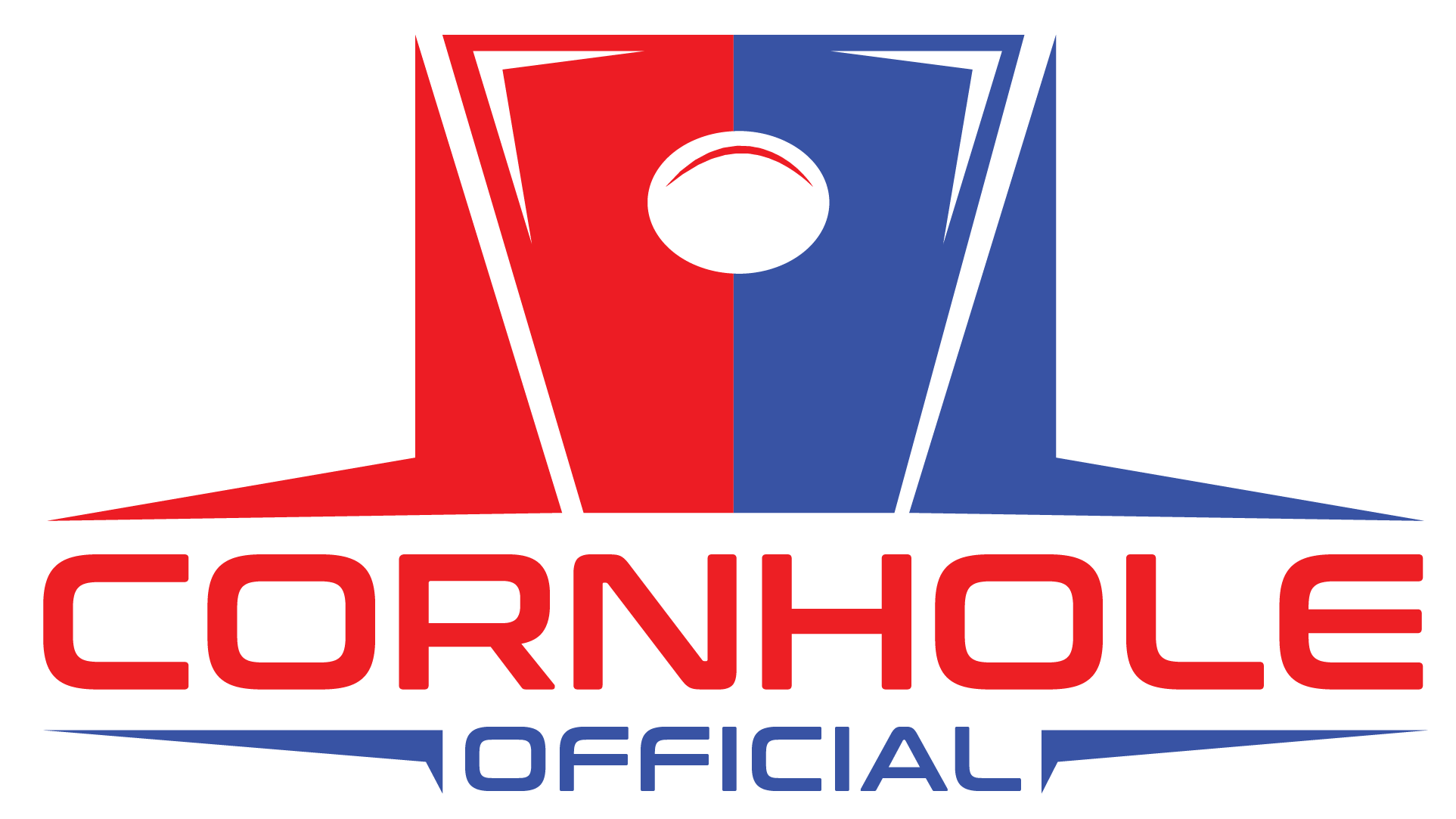Cornhole (aka corn toss) is one of the simplest games to learn, but difficult to master. Unlike many of the other popular sports, there really are not too many things for you to worry about with rules. That’s what makes it such an awesome game for your friends and family. We’re going to breakdown everything you need to know so everyone can learn how to play cornhole.
Understanding the Basics of Cornhole
Cornhole Format - Teams or 1 on 1
There are two different ways that you can play cornhole. As a team or an individual one on one match.
Team Cornhole
Teams are made up of 2 players who will pick their dedicated board to throw at and the side of the board to throw from (lane) for the entire game. Players will not move between frames.
The score is recorded after each frame using the cancellation method (described below) until one team reaches a total of 21 points.
One on One Cornhole
With one on one both boards will have to be thrown at by each player. Starting at 1 end, both players will throw their frame alternating shots until all four bags are thrown by each player. Players will use the same lane throughout the game.
The score will then be recorded and both players will walk to the next board and repeat the process until one player reaches a total of 21 points.
How Many Bags are Used in Cornhole?
Each player whether you are playing 1 on 1 or as a team with 4 players will toss 4 bags per turn or frame. This means a total of 8 bags will be needed for cornhole. The bags will be thrown in an alternating fashion until each player has thrown 4 bags per frame. Player 1 throws 1 bag, then player 2 throws 1 bag until they are gone and the frame is completed.
Getting to Know Cornhole Terms
To truly understand the game of cornhole, you have to master the language. Below are some key terms that every cornhole player should know.
Frame – this is a set of throws where each player will throw 4 bags
Woody – when the cornhole bag rests on the board (not touching the ground) at the end of a frame – this is worth 1 point
Cornhole – when the cornhole bag passes through the hole at any given point during a frame – this is worth 3 points
Sweep – removing a bag from the board that is not a point because it is touching the ground or is considered a foul shot for a rules violation (this should be done before anymore throws are made)
Rake – clearing bags that are piled up under the hole potentially blocking future cornholes from falling through the hole
Foul – when a player passes the line in front of the board before the bag is released from their hand (players are allowed to step past the line once the bag is released)
Game – the amount of frames necessary for one player or team to reach a total of 21 points
Airmail – when a cornhole is thrown without hitting the board
Cornhole Dimensions
We’re going to break this down into 3 different categories to make sure everything is covered. In order to meet the official regulations for the game, the boards, bags, and court should meet certain dimensions.
Cornhole Court Dimensions - How Far Apart are Cornhole Boards?
The regulation cornhole length between boards is 27 feet. This is from the front edge of one board to the front end of the opposite board. You can use a tape measure if you want it to be perfect, or you can do it like most and count off 9 steps. This is about 3 feet for each step which will put you at that right cornhole distance.
To make it nice and easy to understand, there’s a diagram below – feel free to share it with any of those folks questioning your cornhole setup.

Cornhole Board Dimensions
You don’t have to worry too much about the dimensions if you purchase your cornhole board from a trusted manufacturer. But… just in case you’re using someone else’s set and you want to make sure they’re right or you want to make some cornhole boards at home, the standard dimensions for corn hole are below.
The playing surface should be 47.5″ to 48″ by 23.5″ to 25″ for the boards to be considered to be acceptable based on the American Cornhole Association’s standards. The thickness of the playing surface should be at least 1/2″ thick if supported with cross-section boards or 3/4″ thick if not. Cross-section just means it has some sort of support board underneath it.
How Big is the Cornhole Hole Size?
The hole in the cornhole board should be 6 inches in diameter. For reference, the center of the hole should be 12 inches from either side and 9 inches from the top of the board.
You should also be sure that the edge of the hole on the playing surface does not have any burrs or obstructions that would prevent the bag from falling in the hole. It’s tough enough hitting the hole, you don’t want anything getting in the way.
What is the Cornhole Board Angle?
The angle of the board should be somewhere between 9.5 and 11 degrees. Because there is a little room for error in what is considered a regulation board, this can change slightly.
The most important things that you should know is the top of the board (playing surface) should be 12 inches from the ground and the front of the board (playing surface) should be 3 to 4″ from the ground. Below is a basic diagram to show you exactly how a cornhole board should measure out.

Another important point about the boards is about the surface itself. It can be painted with a varnish or high gloss latex paint. The board should be slick enough to allow bags to slide forward when thrown, but it should not be so slick that the bags slide backwards once they hit the board.
What is the Official Cornhole Bag Size and Weight?
Cornhole bags should be approximately 6″ by 6″ and weigh between 15 & 16 ounces or about a pound. You can choose either a synthetic blend to fill the bags or corn (hence the name “cornhole”). Beware though if you use corn, it will not hold up well in the weather and the corn itself will deteriorate over time. Most people/companies choose to make the bags out of synthetic material to avoid the effects of moisture on the bags.
The topic of what the bags should be made of can get extensive. There are no specific regulations for what the bags should be made of, but they should be durable and double-stitched together. The most commonly recommended material is duck cloth and you can use some sort of upholstery thread to hold them together.
If you are a serious cornholer, you can order bags made out of different materials to have the right bag for each board condition. They even make them with different materials on each side for specific shots.
Official Cornhole Scoring
Scoring with cornhole is pretty easy to understand. If you’ve ever played horseshoes, it’s pretty similar. It is based on what is known as the cancellation method. This means the person/team who scores the most points in a frame counts that difference towards the total score of the game.
The scoring system is a total end score from each turn or frame. Players will have the chance to cancel out any points that their opponent makes. The easiest way to do this to add up the total for both players and subtract the smaller number from the larger number. The difference between those 2 numbers is the official score for that frame going to the player who scored the most points.
Here’s an example:
If you throw all 4 of your bags in the hole on your turn (this is known as a Chuck Norris or a 12 pack) and your opponent misses the board on 1 shot but makes cornholes on all 3 others, the score for that round would be 3 for you. The other bags would cancel each other out.
There are only 2 scores that you can get with 1 bag in cornhole – 1 point or 3 points. Bags that are on the board after the frame, but do not go in the hole are worth 1 point (a woody). Bags that go in the hole (cornhole) at any point during the frame are each worth 3 points.
The player or team that scores the most in a frame will be the first to throw in each frame until the other team has recorded a point.
Rules of Gameplay
There really aren’t too many rules for a backyard game of corn toss. Tournaments are a little trickier because of the structure of so many different teams, but we’ll cover that on a different page. For the majority of players there are only a few rules that you have to worry about.
- Players cannot cross the foul line (front of the board) from which you are throwing until the bag is released.
- Bags cannot be thrown overhanded, they must be thrown underhanded
Next we’ll cover a couple of the more controversial issues that could occur during a game of cornhole. Luckily, the rules are pretty clear for these situations.
Do Bags Touching the Ground Count?
The short answer is NO.
If a bag is partially hanging off the board and touching the ground, it does not count as a point. It doesn’t matter what your intoxicated brother-in-law says. If you’re real competitive threads count too. The big question here is what do you do with the bag?
As soon as it is determined that the bag is touching the ground it should be removed from the playing surface before anymore bags are thrown. This is what is known as a sweep.
What is a Rake in Cornhole?
If you are with some absolute legends and everyone is throwing so many cornholes that the bags begin to pile up underneath the hole and prevent further bags from falling through the hole, you can move the bags from underneath the board. This is called a rake.
If you happened to not notice this before the throw and a bag is partially in the hole you can perform a rake to see what score the bag should be given. You should quickly remove all the bags from underneath the hole, if the bag that was partially resting on the hole falls through – it is 3 points. If it hangs even after the rake, it is considered 1 point unless another bag can be thrown in the round to knock it in.
There it is, that is everything you need to know to experience the thrill of cornhole. It is a pretty simple game that anyone can play and it will provide entertainment for almost any occasion.
Let us know in the comments if you have any controversy and need an official ruling. Please feel free to share this with anybody questioning your cornhole knowledge and be sure to check out our page for learning cornhole techniques to improve your game.
